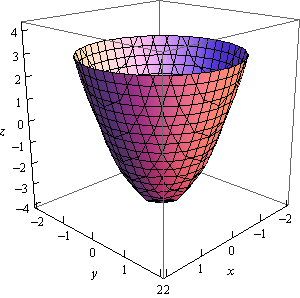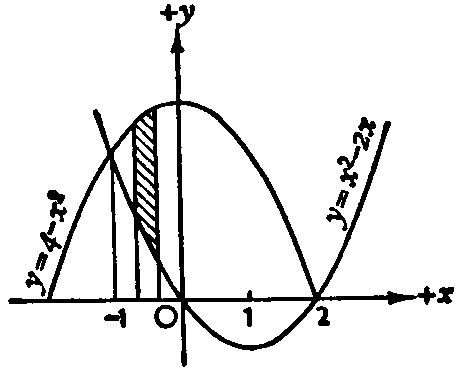
A. Honors Student
Major Coursework
For most students in the Honors Program, your primary goal for higher education is to complete course requirements for a specific major. This page includes signature projects and/or sample coursework that demonstrate the knowledge gained in your major. Each project should be prefaced by a statement identifying 1) the class (course number and name), professor, and semester / year the work was completed, 2) if presented outside of class, in what context, and 3) if not obvious by the title, the thesis / abstract / summary of content. Since websites look better with images, a picture or graphic related to the course or project should also be included. It is quite possible that some of your Honors courses fulfill prerequisites -- you should include those Honors courses here, even if they appear elsewhere in this ePortfolio. If you completed coursework for a second major, you should include representative projects or work from those classes here as well.
The purpose of including work from your courses is two-fold: 1) to allow you to see how much you've learned (i.e., perspective taking), and 2) to have an academic sample that you can showcase to graduate and professional school admissions committees or to potential employers.
The examples provided here are for two of the more popular majors among Honors Program students and at Santa Fe College in general: Engineering and Psychology.
Engineering
Chemistry: The Synthesis of Aspirin and its viability at the Santa Fe College Laboratories
The most common pain killer used today is Acetylsalicylic acid, commonly called aspirin. It is possible to synthesize aspirin using Salicylic acid and Acetic anhydride. There are two main objectives for this experiment: synthesize a sample of Acetylsalicylic acid, and analyse the sample obtained by measuring its melting temperature, and conduct a spectrophotometric analysis of it. This two objectives allow us to determine if the protocol used can be validated.
CHM2046 College Chemistry 2, Honors Contract, by Carlota Bonnet, Dr. Sindia Rivera-Jimenez, Fall 2014, Presented at 2016 Southern Regional Honors Council Conference.
Physics: Magnetic Shielding in Stellar and Interstellar Travel, and in Terraforming
I decided to take the opportunity that my PHY2049 course has provided me to apply some of the concepts of electrodynamics to study one of the biggest obstacles currently facing aerospace engineers: solar wind. Solar wind, a collection of high-energy radiation, poses a great threat to astronauts in space flight outside of Earth's magnetosphere.
PHY2049 Physics 2, Honors Contract by James Haddix, Dr. Karim Diff, Spring 2016, Presented at Spring 2016 2017 Research in Undergraduate Education Festival.
Linear Algebra: Image Scaling with Various Interpolants
Popular media often gives us the impression that an image can be infinitely enhanced. In reality, images can only hold a certain amount of information. When an image is scaled to a smaller or larger size, this cap on information must be accounted for by attempting to interpolate the necessary intermediate pixel values. This is called image scaling, and there are many methods of accomplishing this task, all which work to varying degrees of accuracy. This project looks at three of the most common methods, namely nearest neighbor, bilinear interpolation, and bicubic interpolation.
Honors MAS2103 Linear Algebra, by Timon Angerhofer and Austin Jacobs, Dr. Jason Harrington, Spring 2015
Differential Equations: How Pulse Width Modulation Emulates Analog Voltages
Most microprocessors are strictly digital, and therefore are unable to generate analog voltage functions. In an effort to emulate analog voltage functions, they use a digital signal modulation technique known as Pulse Width Modulation(PWM). We wanted to prove that PWM is a valid method of emulating analog voltage functions by digital devices. To prove this, we approached the topic from a theoretical standpoint through mathematical analysis, and real world standpoint through experimental data analysis. The mathematical analysis proved that any pulse function can match any voltage output of any analog voltage function, within defined parameters, at any given time. The experimental data strengthened this proof, and showed how PWM functions match analog functions both graphically and in real world applications such as LR circuits.
Honors MAP2302 Differential Equations, by Timon Angerhofer, Tavio Guarino, Seth Kittles, Dr. Jason Harrington, Fall 2014.
Calculus 3: Evaluating the Riemann Zeta Function at s=2
This function dates back to the early 1800’s, where it was first proposed and studied by Leonard Euler. It was later expanded upon by Bernhard Riemann in 1859. It is a critical component of number theory and is used in many fields such as physics, probability theory, and applied statistics.
Honors MAC2313 Calculus 3, by Philip Christoffersen, Justin Curry, Donald Maddox, and Himal Patel, Dr. Jason Harrington, Fall 2013.
Calculus 2: Parametric Equations: Witch of Agnesi, Cissoid of Dicles, Swallowtail Catastrophe
In this presentation, we discuss three parametric curves, the Witch of Agnesi, Cissoid of Diocles, and the Swallowtail Curve. We also discuss the life of Maria Gaetana Agnesi who was a female mathematician from the 1700s.
Honors MAC2312 Calculus 2, by Tirza Angerhofer and Allison Milian, Prof. Bruce Teague, Spring 2016.
We investigate the properties of heating and cooling. We begin our investigation with Newton’s Law of Cooling which states that the temperature of an object changes at a rate proportional to its relative temperature. Simply put, the rate at which liquids cool depends on the difference between their temperature and the temperature of the surrounding. Through Newton’s equation we will compare the time it takes certain liquids of choice to go from being hot to surrounding temperature. Using calculus, we will find the cooling constant of each liquid and analyze.
Honors MAC2311 Calculus 1, by Swan Htun and Melissa Gonzalez, Prof. Bruce Teague, Spring 2016, Presented at 2016 Research in Undergraduate Education Festival.
Psychology
General Psychology: Women's Hair Color and Perception
Our study surveyed Santa Fe College students examined whether a female subject's hair color and affected perceptions of her intelligence and capabilities.
Honors PSY2012 General Psychology, by Olivia Smith, Alita Milian, and Marcel Martin, Dr. Christopher Raye, Spring 2016
Developmental Psychology: Bronfenbrenner Theory
According to developmental researcher Urie Bronfenbrenner, physical surroundings and family configurations influence the development of individuals. I chose the ages seventeen and eighteen because it is where one feels stuck between the struggles of adolescence and stepping into the unknown of adult responsibilities. Moreover, the bioecological theory proposed by Bronfenbrenner is going to be used to examine the environment and situations my interviewee went through in the ages seventeen to eighteen.
Honors DEP2004 Developmental Psychology, by Mary Llinas, Dr. Natalie Hadad, Spring 2017.
Social Psychology: A Link Between Worlds: Household Income, Stress, and Health
The intention of the study was to verify earlier debates regarding the positive relation between income distribution and health indicators. As a result, the data was divided into clusters specifically into the three main socioeconomic classes: low, middle, and upper. The research was able to investigate the degree of the impact certain aspects would induce on each class; it became numerically possible to conclude whether one or the other scored higher on a measured indicator like a six-point stress scale in which participants were asked to rate stress levels. In retrospect, the results demonstrated how the lower class is often at a disadvantage whereas the middle fluctuates and the upper class report an overall healthier lifestyle. This is due to combinations of social, economic, and medical determinants of health which were carefully assessed per responder.
Honors SOP2002 Social Psychology, by Jessica Trochez, Dr. Ryan Keith, Spring 2017.
Statistics: Amount of Sleep and Its Effects on Test Scores
The object of study is to determine whether the amount of sleep a Santa Fe College student has the night before an exam influences the score received on that particular exam.
Honors STA2023 Statistics, by Jessica Trochez and Mikayla Castro, Dr. Sarah George, Fall 2015.
Biology: Effect of L-methionine Supplementation on Regeneration Rates of Girardia tigrina
The purpose of this research was to determine if the essential amino acid L-methionine [L-2-amino-4- (methylthio)butyric acid] is viable to influence faster cell regeneration in species with regenerative properties.
Honors STA2023 Statistics, by Jennifer Pelrey, Dr. Sarah George, Fall 2015.











